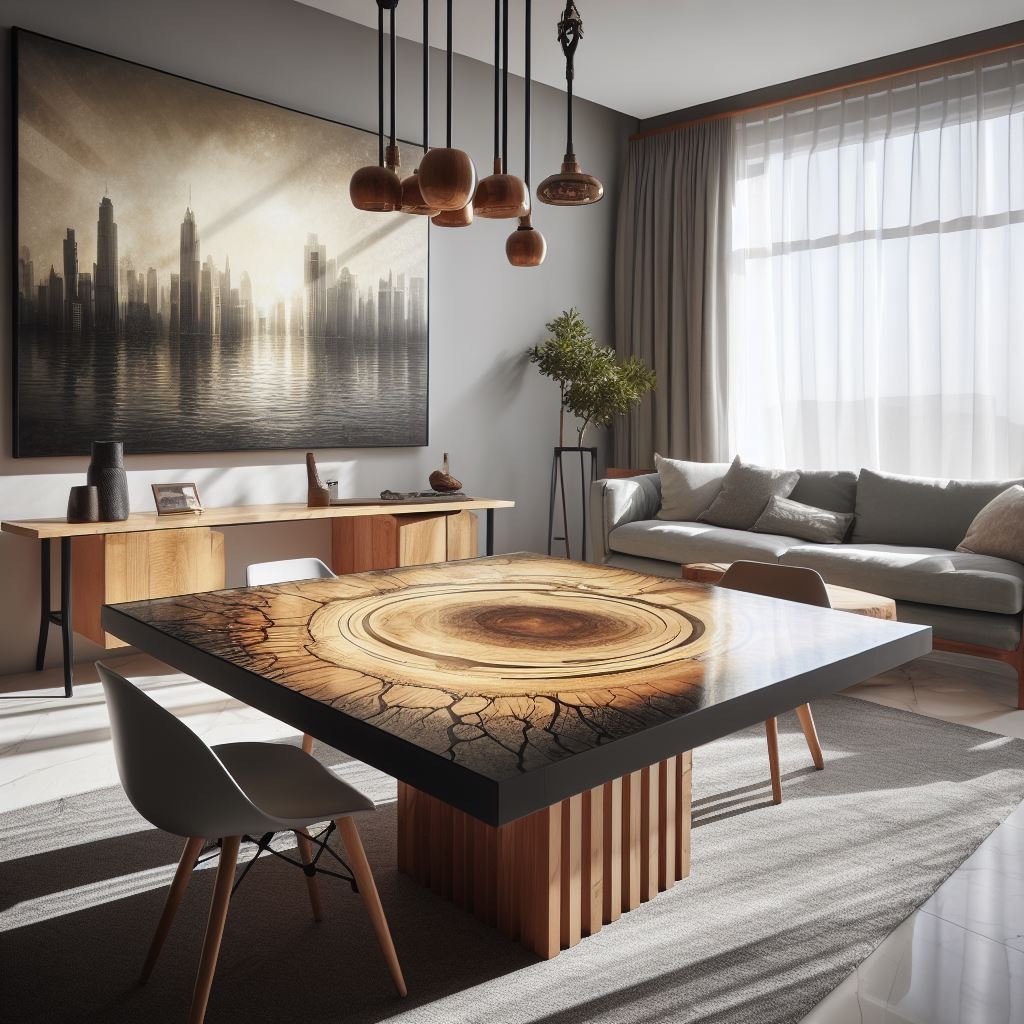
Epoxy tables have gained immense popularity in recent years, becoming a staple in modern interior design. However, a common concern among enthusiasts and buyers revolves around the question: does an epoxy table crack in sunlight? In this blog, we’re diving deep into this topic of epoxy table maintenance, dispelling myths, and providing you with the essential knowledge to make an informed decision about your epoxy furniture.
Understanding Epoxy Tables
Before delving into the effects of sunlight, let’s understand what epoxy tables are and why they’re so coated in this blog of epoxy table maintenance.
What is an Epoxy Table? An epoxy table is crafted by encasing various materials, often wood, in layers of epoxy resin. This process not only creates a smooth, durable surface but also encapsulates the beauty of the embedded elements, making each piece unique and visually stunning. Join us in epoxy table maintenance tips blog to find out.
Epoxy and Sunlight: Separating Fact from Fiction
1. Epoxy’s Resilience to Sunlight:
Epoxy, by nature, is resistant to sunlight-induced damage. High-quality epoxy tables are crafted using UV-resistant epoxy resin, which prevents yellowing and degradation, ensuring the table retains its original beauty over time.
2. Proper Curing is Key:
Cracking in epoxy tables is rarely caused by sunlight. Instead, improper curing during the manufacturing process is usually the culprit. Experienced craftsmen ensure meticulous curing, eliminating the risk of cracks regardless of sunlight exposure.
3. UV-Protected Finishes:
For added protection, many epoxy tables feature UV-protected finishes. These finishes act as a shield against harmful UV rays, enhancing the table’s longevity and preserving its aesthetic appeal.
Tips for Maintaining Your Epoxy Table
1. Avoid Prolonged Sun Exposure:
While epoxy tables are resilient, it’s advisable to avoid prolonged direct sunlight exposure. This precaution applies to most furniture pieces, ensuring they remain in pristine condition for years.
2. Regular Cleaning:
Regularly clean your epoxy table with a mild, non-abrasive cleaner and a soft cloth. Avoid harsh chemicals, as they can compromise the finish and make the table more susceptible to environmental factors.
3. Use Coasters and Mats:
To prevent potential damage from hot items or sharp objects, use coasters and mats. While epoxy is sturdy, these precautions can extend its lifespan.
Conclusion: Enjoy Your Epoxy Table
In conclusion, the myth that epoxy tables inherently crack in sunlight is just that – a myth. With proper manufacturing, high-quality UV-resistant epoxy, and a little care, your epoxy table can grace your living space for generations without losing its charm. Embrace the beauty of epoxy and enjoy its elegance under the sunlight, knowing that it’s crafted to withstand the test of time. Share epoxy table maintenance tips before we fold up & check our epoxy table range.
FAQs (Frequently Asked Questions)
1. Can I place my epoxy table near a window with direct sunlight? Yes, you can place your epoxy table near a window with direct sunlight. However, it’s advisable to rotate the table occasionally to ensure even exposure and minimize the impact of prolonged sunlight.
2. Will my epoxy table lose its shine over time? Epoxy tables are designed to retain their shine. Regular cleaning and avoiding abrasive materials can help maintain the table’s luster for years.
3. Can I repair a cracked epoxy table? Repairing a cracked epoxy table requires professional expertise. It’s best to consult the manufacturer or a skilled artisan for repairs to ensure the table’s integrity.
4. How can I identify a high-quality epoxy table? High-quality epoxy tables are usually made by experienced craftsmen and feature UV-resistant epoxy resin. Additionally, reputable manufacturers often provide warranties, assuring the quality of their products.
5. Does epoxy emit harmful fumes? During the curing process, epoxy can emit fumes. It’s crucial to follow the manufacturer’s guidelines, work in a well-ventilated area, and use appropriate safety gear to minimize exposure to these fumes.

